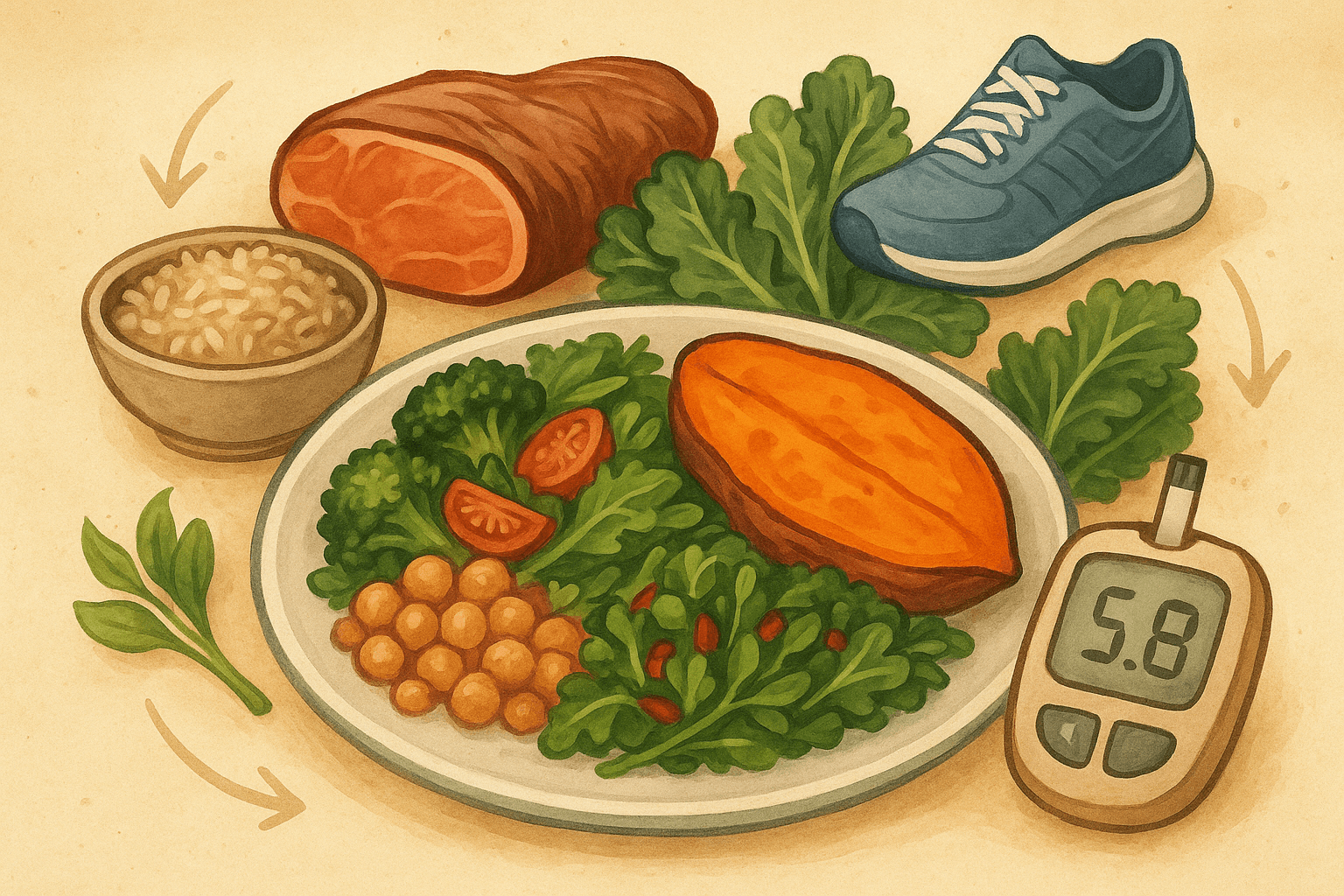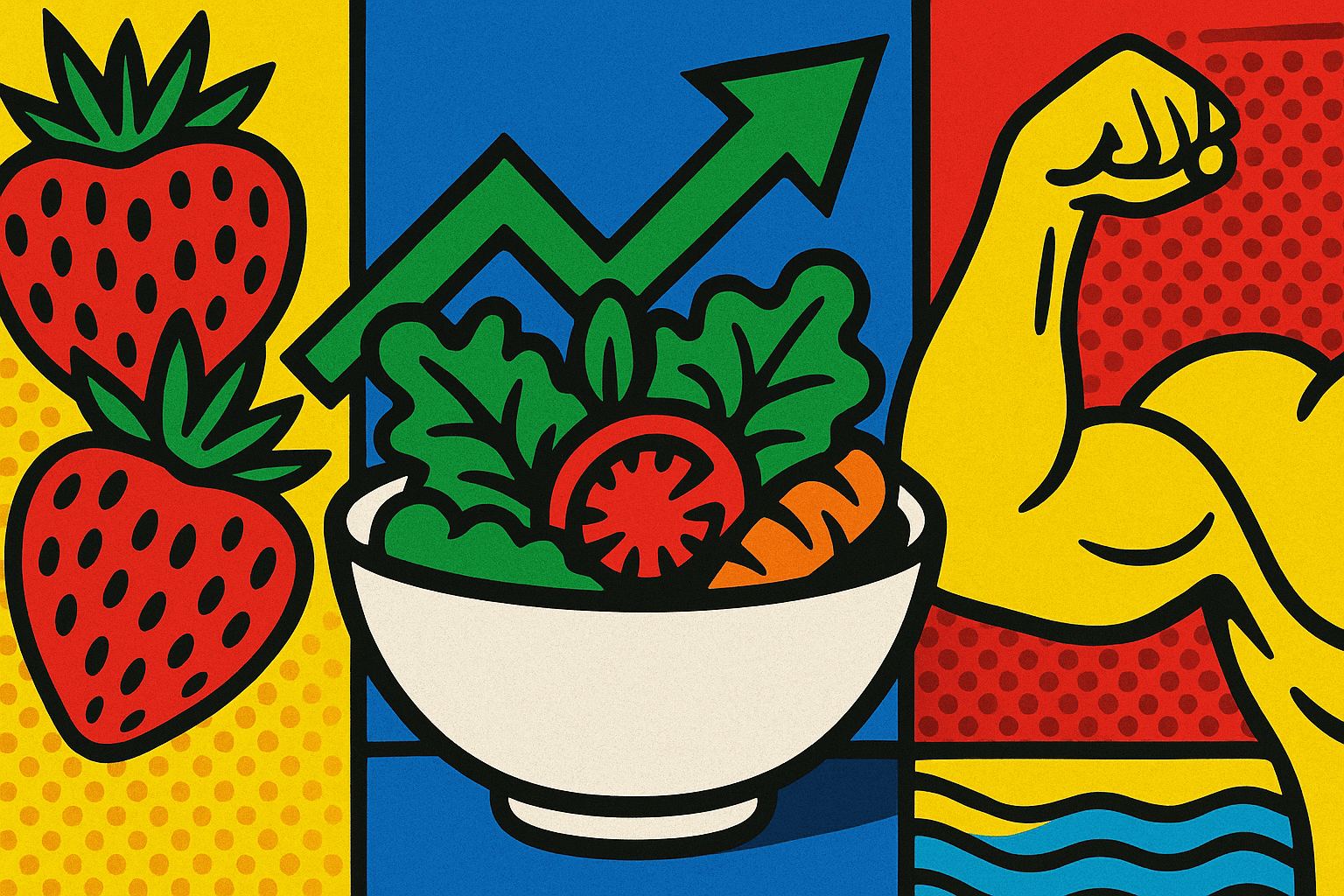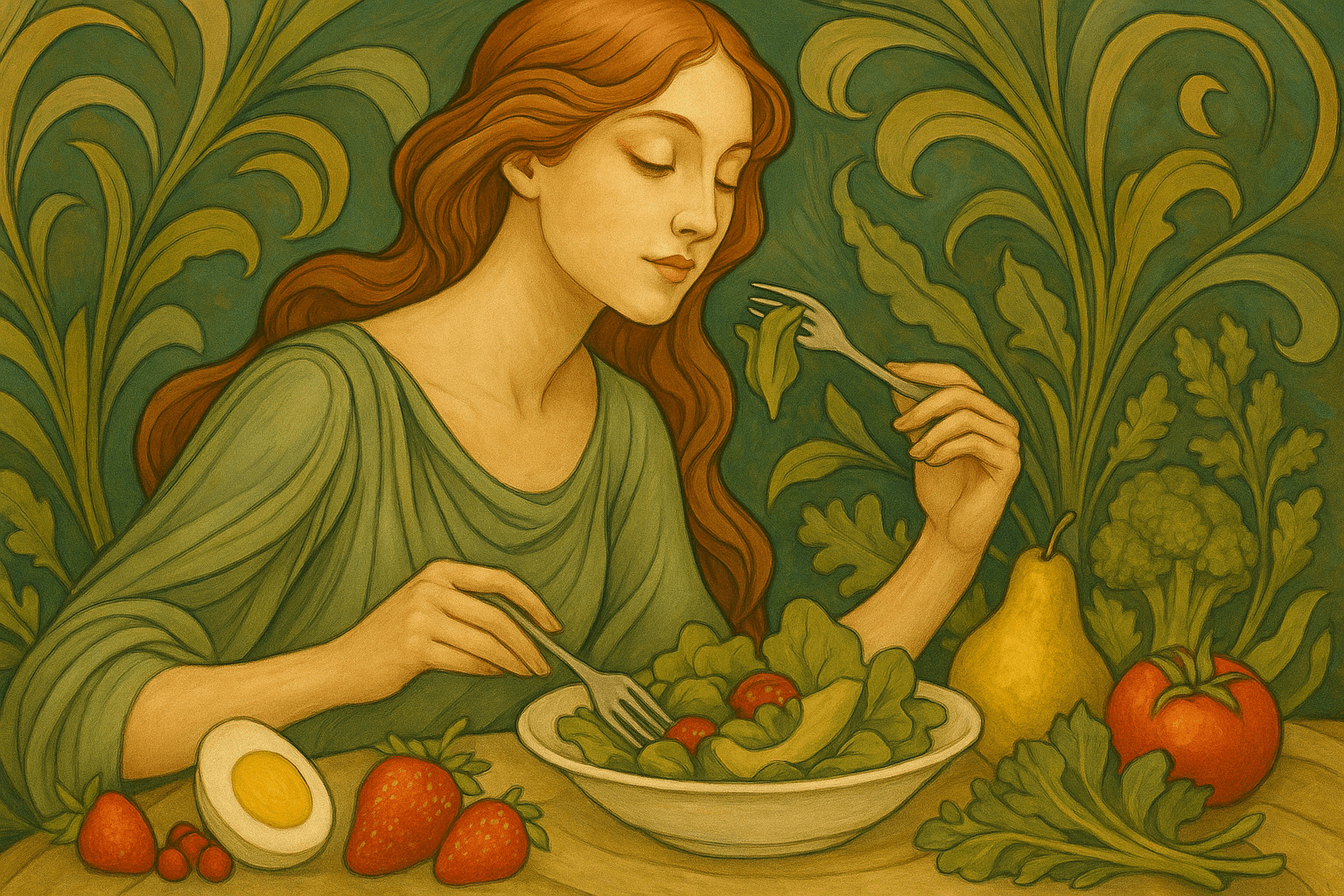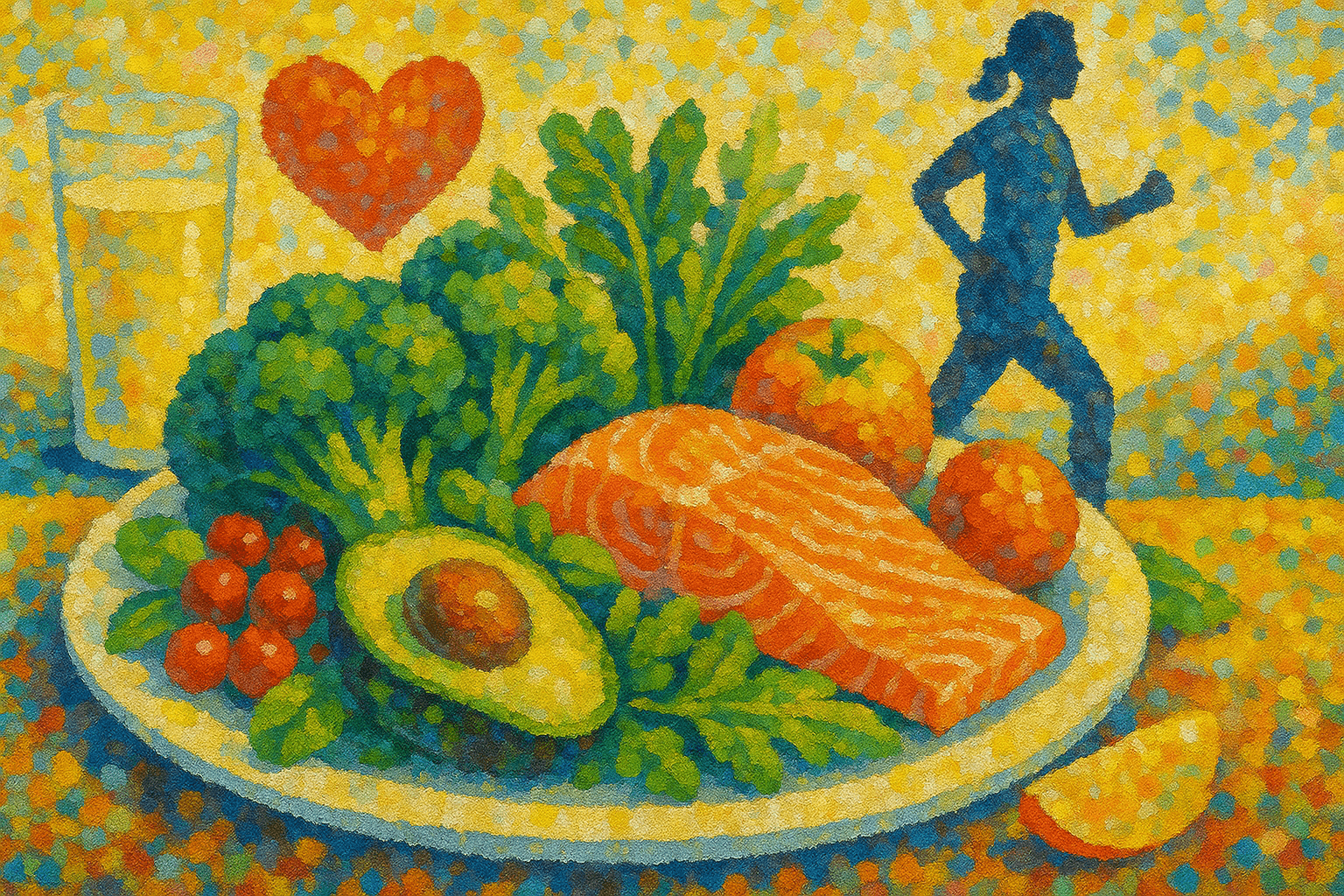Mastering Blood Sugar: The Low-Glycemic Lifestyle That Supports Diabetes Management
Published on June 12, 2025

Managing diabetes isn’t just about cutting sugar — it’s about learning how your body responds to different carbs. That’s where the glycemic index (GI) and glycemic load (GL) come in, offering powerful insight into stabilizing your blood sugar and energy.
What Is the Glycemic Index?
GI ranks carbs on a scale from 0–100 based on how quickly they raise blood sugar.
Low GI: 0–55
Medium GI: 56–69
High GI: 70+
Examples of low-GI foods:
Steel-cut oats
Lentils, chickpeas
Sweet potatoes
Berries
Non-starchy vegetables
Nuts and seeds
Examples of high-GI foods:
White bread
Cornflakes
Instant rice
Watermelon
Soda, candy
Cooking tip: Mash or over-ripen foods = higher GI. Roasting, firm textures = lower GI.
Smart combo: Pair high-GI food with low-GI fiber, fat, or protein (e.g., toast + nut butter).
What Is Glycemic Load?
GL accounts for both the type of carb and the portion size. It tells you how much a food will actually raise blood sugar.
GL = (GI × grams of carbohydrate per serving) / 100
Low GL: 0–10
Medium GL: 11–19
High GL: 20+
Watermelon = high GI, but low GL due to low carb content.
Add lemon juice or vinegar to meals to lower glycemic effect.
Why Low-Glycemic Eating Works
Research shows low-GI/GL diets can:
Lower HbA1c
Improve insulin sensitivity
Stabilize cholesterol
Support weight loss or maintenance
Reduce risk of diabetes complications
Improve energy and mood
Lower inflammation and improve gut health
How to Build a Low-GI Plate
Formula:
1/2 plate: non-starchy veggies
1/4 plate: protein (chicken, tofu, eggs)
1/4 plate: low-GI carbs (quinoa, lentils, barley)
Add: healthy fat like olive oil, tahini, or avocado
Low-GI combos:
Oatmeal + chia + cinnamon + almonds
Lentil soup + salad with vinaigrette
Grilled chicken + roasted sweet potato + spinach
Smart Low-GI Snacks
Apple + peanut butter
Greek yogurt + berries
Carrot sticks + hummus
Hard-boiled egg + tomatoes
Celery + almond butter
Breakfast Favorites
Chia pudding with almond milk and berries
Eggs + spinach + mushrooms
Avocado toast on whole grain with sesame seeds
Dinner Options
Baked trout + Brussels sprouts + quinoa
Tofu stir-fry with bok choy + brown rice
Mashed cauliflower mixed with potatoes for lower GI
10 Tricks to Reduce Glycemic Impact
Add protein or fat to carbs
Eat fiber first
Choose whole ingredients
Boil pasta al dente
Mix rice with beans
Avoid sugary drinks
Add vinegar to salads
Swap white rice → wild or cauliflower rice
White pasta → lentil/chickpea pasta
Crackers → flaxseed crackers or cucumber slices
What to Watch Out For
Low-GI ≠ healthy if it’s still processed or full of bad fats.
Watch for:
Trans fats
Processed low-GI junk
Artificial sweeteners
Hidden carbs in:
Granola bars
Sweetened plant milks
Smoothies without fiber
Pro tip: Mix starchy carbs with greens or legumes to buffer blood sugar spikes.
Real-World Low-GI Tips
Meal prep to avoid impulse eating
At restaurants: order grilled, not fried; ask for extra veggies
Track meals, glucose, mood
Stay hydrated: 6–8 glasses water daily
Prioritize sleep: 7–9 hrs = better blood sugar
Have go-to fallback meals
Join a support community
Final Thoughts
Low-GI eating is flexible, sustainable, and delicious. It’s not about restriction — it’s about resilience and energy.
Start simple:
Swap white bread
Add beans
Choose fiber-rich fruit
Observe how you feel post-meal
Your food can be your ally. Mastering your glycemic response is a powerful way to take control — not just of diabetes, but of your energy and life.
Coming soon: The 7-Day Low-Glycemic Meal Plan for Blood Sugar Control








